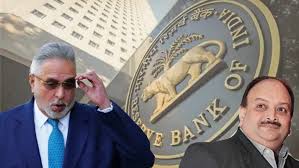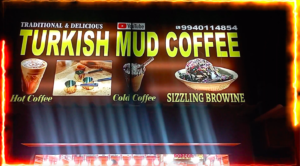Loan Waiver vs Loan Write-Off – கணக்கியல் ரீதியாக ரூ.68 ஆயிரம் கோடி கடன் தள்ளுபடி

In the last Parliament session, Rahul Gandhi had asked the government to provide a list of top 50 bank loans defaulters in the country, leading to sharp exchanges and uproar in the Lok Sabha.
Surjewala demanded answers from the prime minister on why their loans were waived when the country was reeling under serious economic stress. “This is a classic case of promoting ‘dupe, deceive and depart’ policy of the Modi government, which can no longer be accepted and the prime minister has to answer,” he told reporters through video conference.

Loan waiver is quite different from writing off a loan as it is the cancellation of recovery or refraining from claiming the dues. In simpler terms, banks will completely give up on such loans and no recovery will be made.
Writing off a loan or asset means considering that it does not have future value or no longer serves the purpose. A non-performing asset is written off after all avenues of recovery are exhausted and chances of recovery of due loan seem remote. To clear the balance sheet, all such kind of loans are written off once for all. It is a regular exercise that banks conduct in order to clean their balance sheet as well as to achieve tax efficiency. Although bad loans are written off, borrowers of such loans remain liable for repayment. There are several cases when such bad accounts were written off but loan recovery was done. Recovery of such accounts, however, happens on ongoing basis under the legal mechanism.
வைர நகை வர்த்தகர் மெகுல் சோக்ஸி கடன் உள்பட வங்கியில் கடன் பெற்று திருப்பிச் செலுத்தாமல் இருக்கும் முதல் 50 பேரின் கடன் என மொத்தம் ரூ.68 ஆயிரம் கோடி கடனை “கணக்கியல் ரீதியாக” வங்கிகள் தள்ளுபடி செய்துள்ளன என்று தகவல் பெறும் உரிமைச் சட்டத்தின் கீழ் ரிசர்வ் வங்கி அளித்த தகவலில் தெரியவந்துள்ளது.
“டெக்னிக்கலி ரைட் ஆப்” அல்லது “கணக்கியல் ரீதியாக தள்ளுபடி” என்பது வங்கியின் வரவு-செலவுக் கணக்கில் மேற்கொள்ளப்டும் செயலாகும். அதாவது ரிசர்வ் வங்கிக்கு அளிக்கும் கணக்கில் ஒரு வங்கி தனது வாராக்கடனை, செயல்படா சொத்துகளைத் தள்ளுபடி செய்ததாக கணக்கீடு ரீதியாகக் காண்பிக்கும். ஆனால், கடன் கொடுத்த வங்கிக் கிளையைப் பொறுத்தவரை இந்தக் கடன் தள்ளுபடி செய்யப்படாது. கடன் வாங்கிய நபரிடம் இருந்து கடன் தொகையைப் பெறும் முயற்சி தொடர்ந்து நடக்கும்.

2-வது பெரிய கடன்காரராக ஆஇஐ அக்ரோ நிறுவனம் ரூ.4,314 கோடி கடன் பெற்றுள்ளது. மேலும், சந்தீப் ஜூஜன்வாலா, சஞ்சய் ஜூஜூன்வாலா ஆகியோரும் இந்தக் கடன் பட்டியலில் அடக்கம். அடுத்ததாக, வைர வியாபாரி ஜதின் மேத்தா ரூ.4,076 கோடி கடன் பெற்று திருப்பிச் செலுத்தாமல் இருக்கிறார். இவர்களின் கடன் தள்ளுபடி செய்யப்பட்டாலும் சிபிஐ அமைப்பு தேடி வருகிறது.
2 ஆயிரம் கோடி வரை கடன் பெற்ற வகையில் ரோட்டாமாக் குளோபல் நிறுவனம், கோத்தாராரி குழுமம் (ரூ.2,850 கோடி), குடோஸ் கெமி (ரூ.2,326 கோடி), பாபா ராம்தேவ் பாலகிருஷ்ணா குழு நிறுவனத்தின் ருச்சி சோயா நிறுவனம் (ரூ.2,212 கோடி), ஜூம் டெவலப்பர்ஸ் பிரைவேட் (ரூ.2,012 கோடி) ஆகியவை உள்ளன.
ஆயிரம் கோடிக்கு மேல் கடன் பெற்ற வகையில் 18 நிறுவனங்கள் இருக்கின்றன. இதில் விஜய் மல்லையாவன் கிங் பிஷர் நிறுவனமும் அடங்கும். ஆயிரம் கோடிக்குள்ளாக 25 நிறுவனங்கள் இருக்கின்றன. இதில் தனிநபர்கள் முதல் நிறுவனங்கள் வரை இருக்கின்றன.
Thanks to Financial express / The week / The Hindu / Google






